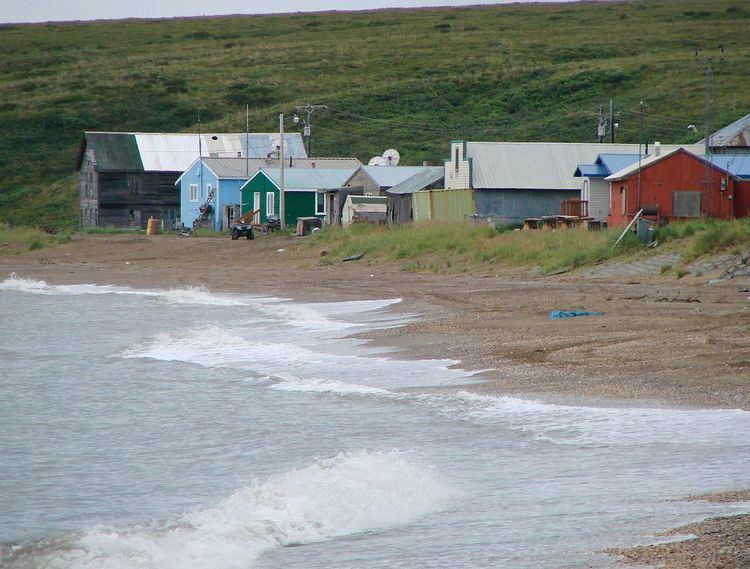Country United States Borough Northwest Arctic Elevation 2 m Zip code 99736 | State Alaska Incorporated October 28, 1970 Area code 907 Population 125 (2013) Local time Sunday 5:24 AM | |
 | ||
Weather -22°C, Wind W at 27 km/h, 74% Humidity | ||
Deering (Ipnatchiaq in Iñupiaq) is a city in the Northwest Arctic Borough in the U.S. state of Alaska. It is located on a sandy spit on the Seward Peninsula where the Inmachuk River flows into Kotzebue Sound, 92 km (57 mi) southwest of Kotzebue.
Contents
Map of Deering, AK, USA
As of the 2010 census, the population was 122. As of 2003, the village includes a community hall, a clinic run by the U.S. Public Health Service, a post office, a church, two stores, and a National Guard armory.
Culture
The inhabitants are primarily Iñupiat Inuit. The people are active in subsistence. The sale or importation of alcohol is banned in the village.
History
The village was established in 1901 as a supply station for interior gold mining near the historic Malemiut Eskimo village of Inmachukmiut. The name probably comes from the schooner Abbie M. Deering, which was present in the area at that time; see #The Abbie M. Deering. Deering incorporated as a second-class city in 1970. It also has a village council, organized under the Indian Reorganization Act of 1934.
Geography
Deering is located at 66°4′33″N 162°43′6″W (66.075713, -162.718229).
According to the United States Census Bureau, the village has a total area of 5.3 square miles (14 km2), of which, 5.1 square miles (13 km2) of it is land and 0.1 square miles (0.26 km2) of it (2.28%) is water.
Demographics
As of the census of 2000, there were 136 people, 42 households, and 28 families residing in the village. The population density was 26.5 people per square mile (10.2/km²). There were 61 housing units at an average density of 11.9 per square mile (4.6/km²). The racial makeup of the city was 93.38% Native American (Iñupiat), 5.88% White, and 0.74% from two or more races.
There were 42 households out of which 40.5% had children under the age of 18 living with them, 21.4% were married couples living together, 33.3% had a female householder with no husband present, and 31.0% were non-families. 23.8% of all households were made up of individuals and 2.4% had someone living alone who was 65 years of age or older. The average household size was 3.24 and the average family size was 3.90.
In the village the age distribution of the population shows 39.7% under the age of 18, 6.6% from 18 to 24, 28.7% from 25 to 44, 17.6% from 45 to 64, and 7.4% who were 65 years of age or older. The median age was 27 years. For every 100 females there were 109.2 males. For every 100 females age 18 and over, there were 115.8 males.
The median income for a household in the village was $33,333, and the median income for a family was $43,438. Males had a median income of $26,875 versus $25,625 for females. The per capita income for the village was $11,000. None of the families but 5.8% of the population were below the poverty line. No one under the age of 18 or over 64 were living below the poverty line.
The Abbie M. Deering
A first-hand account written by Captain James D. Winchester and published in 1900 tells that the Abbie M. Deering was bought by a company of twenty men who wanted to sail to the "Alaskan Gold Fields" during the Klondike Gold Rush. They left Lynn, Massachusetts in November 1897, passed through the Straits of Magellan, and arrived at San Francisco five months later, where they sold the ship. Records kept by the Minerals Management Service of the U.S. Department of the Interior show the schooner did make it to Alaska, where it was lost in the Aleutian Islands in September 1903.
Rudyard Kipling's 1897 novel Captains Courageous mentions the Abbie M. Deering by name.
